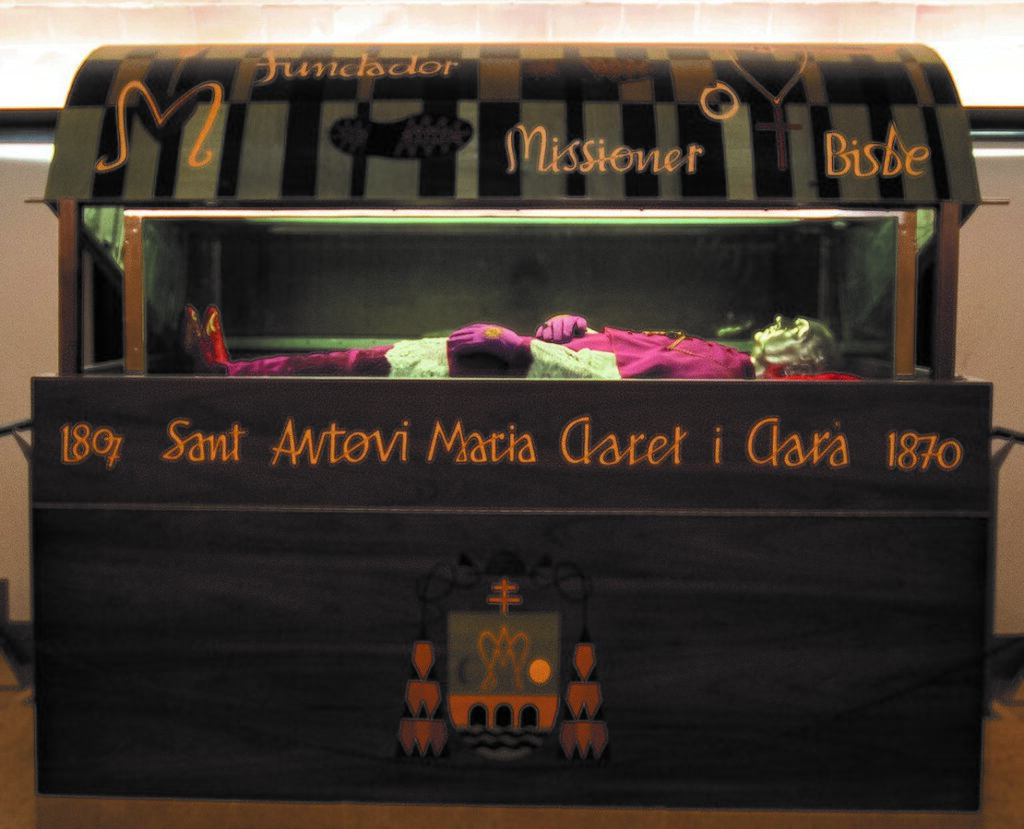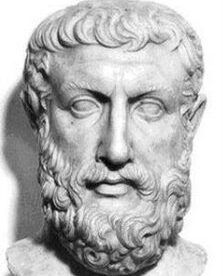
Actual sepulcro del Santo en la cripta del Templo de San Antonio María Claret, en Vic
Available from St. Bonaventure Publications and Mary Immaculate Queen Center
Book Length: 336 pages
In learning about the life of St. Anthony Mary Claret, it may appear at first glance that his Autobiography is the sole relevant text. If one is truly limited in time, reading that magnificent book may indeed be the best option; but to obtain the greatest possible viewpoint on his life, we must look beyond what he himself wrote.1 The witness of reliable biographers not only provides the opportunity for the explaining of historical context not immediately obvious to the average reader, but additionally the chance to relate events omitted by this venerable saint in his autobiography, whether through humility or forgetfulness. On these two points and more, Fr. Echevarria’s hagiography is a resounding success.
The poetically chronological structure of this work operate in tandem with the masterful prose of the author to serve and complement the noble contents which he treats. One wonders what it would be like to read him in the original Spanish version of this book, as this TAN edition of The Miracles of St. Anthony Mary Claret comes to us through translation. Thankfully the composition has been so excellently rendered, bringing to the Anglophone world such edifying descriptions of the apostolic life of St. Anthony as this vividly allegorical excerpt:
Everywhere his word was what it had been in Catalonia, in the Canaries, in Cuba, and in Madrid; the voice of the Angel of the Apocalypse, which, with the sound of trumpet awakened lethargic consciences. At the same time, his voice was like the rays of the lighthouse, which from the coasts of life illuminated the road to eternity.
(210-211)
Greater than such descriptions are the stories, drawn from authentic sources, of the many miracles God saw fit to work through His humble laborer. The most extraordinary of these is that of the miraculous indwelling of the Eucharist within the seraphic heart of the great saint, so eloquently related by the author of this book. In the chapter entitled, “The Living Ciborium”, Fr. Echevarria writes:
Blessed Anthony did not receive this favor in the time of his youth, a time most exposed to misconception, but in the last years of his life, a time of maturity, of persecution, of interior martyrdom and of the highest state of supernatural contemplation.
(237-238)
Adding to this, the author wisely inserts the words of St. Anthony to his spiritual director concerning this union so intimate, yet so inexpressibly beautiful:
“After Mass,” he says, “I am, for the space of half an hour, totally annihilated. I do not desire anything but the holy will of God. I then live through the life of Jesus. He, in possession of me, possesses nothing, I possess everything in Him.”
(240)
Though we cannot expect such a favor to be granted to ourselves, do we still not have access to the same Eucharist? Should not such a story, verified by the authorities of the same Catholic Church founded by Jesus Christ, animate us with a deeper reverence for His Body and Blood? One obstacle may forbid us from receiving the bread of angels—grave sin, which after baptism may only be pardoned by a sincere confession. In reflecting on this prodigy, it is therefore well worth considering the misery of a soul which has made itself so repugnant so as to turn the very same reception of this divine gift into condemnation rather than communion. Moreover, this example should inspire us, with its illuminating quality, to appreciate even further the everlasting love which Our Lord offers us in this sacrament.
The stories given in this work and the wealth of biographical details about the noble and edifying life of St. Anthony make this text incredibly valuable to Catholics. Therefore, I can safely recommend it to all who are willing to take up this book and read it for themselves, for therein they shall find a repository that proves even in these later centuries God still works through the humble to bring about great things. It is rather unfortunate that TAN has ceased to print this title—but it can be hoped that one day either this publisher or another shall take the expense and reap the gain of reprinting this title.2 May St. Anthony Mary Claret, so powerful while he was yet in this world, aid us from Heaven, and inspire the readers of this work to live in union with Him to whom he was so bound in loving service.
-
Given, however, that I have reviewed The Autobiography of St. Anthony Mary Claret elsewhere on this website, I have found it appropriate to write less in my analysis of this work.
You may find my review of that glorious book here:
“Book Review: The Autobiography of St. Anthony Mary Claret.”
-
The only error in this present edition is the rather insignificant yet annoying typo of “Elizabeth” being given in some places in the later part of the book where the name Isabel should have been rendered, in reference to Queen Isabel II of Spain, to whom St. Anthony was a confessor.
